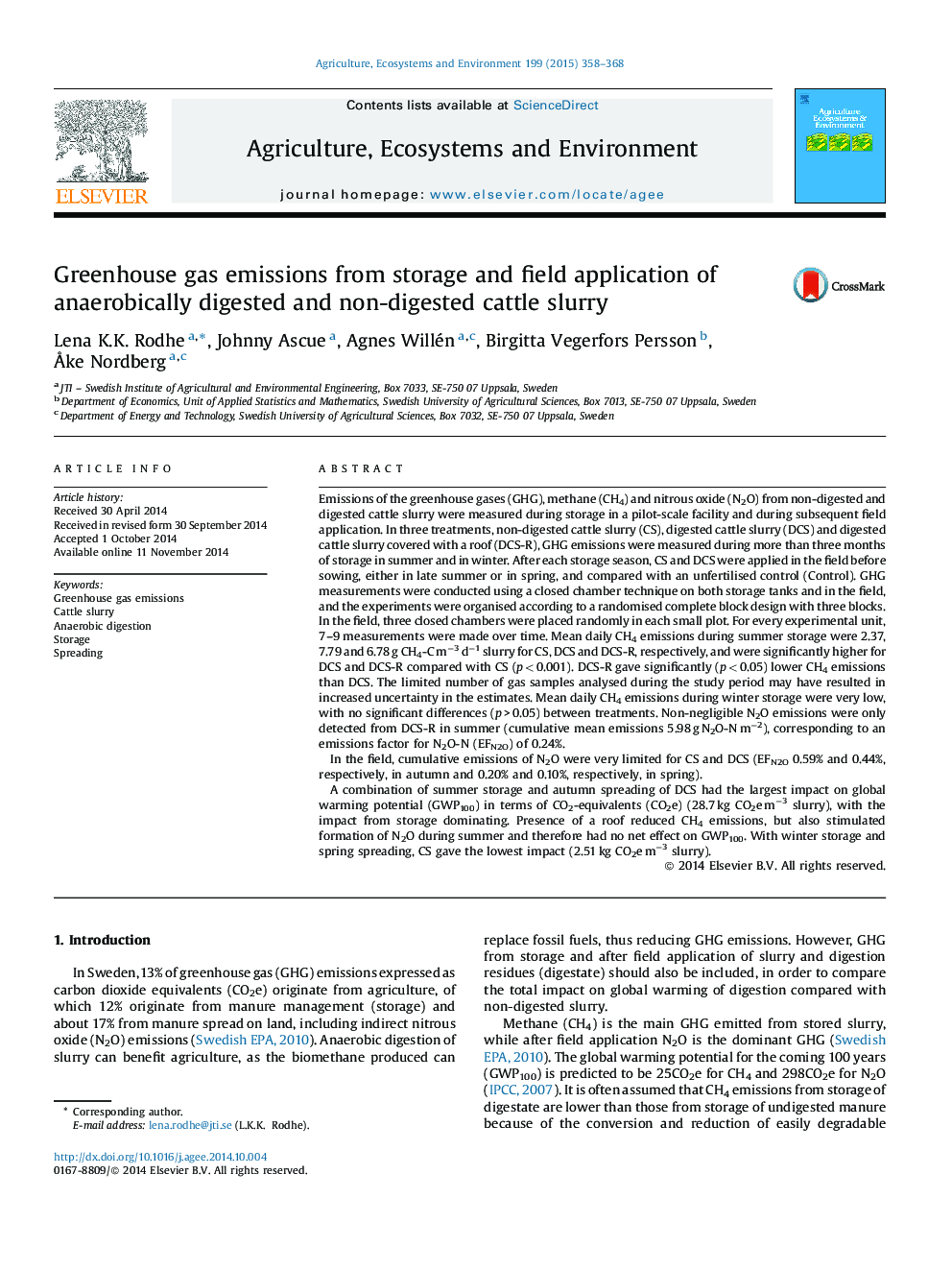| کد مقاله | کد نشریه | سال انتشار | مقاله انگلیسی | نسخه تمام متن |
|---|---|---|---|---|
| 2413875 | 1552053 | 2015 | 11 صفحه PDF | دانلود رایگان |
• We measured fluxes of N2O and CH4 from stored and spread digested and non-digested slurry.
• During summer, stored digestate generated much higher CH4 emissions than non-digested.
• A roof on digestate storage decreased CH4, but generated N2O emissions.
• Storing digestate during summer with autumn spreading had the largest impact on GWP.
• Storing slurry during winter with spring spreading had the smallest impact on GWP.
Emissions of the greenhouse gases (GHG), methane (CH4) and nitrous oxide (N2O) from non-digested and digested cattle slurry were measured during storage in a pilot-scale facility and during subsequent field application. In three treatments, non-digested cattle slurry (CS), digested cattle slurry (DCS) and digested cattle slurry covered with a roof (DCS-R), GHG emissions were measured during more than three months of storage in summer and in winter. After each storage season, CS and DCS were applied in the field before sowing, either in late summer or in spring, and compared with an unfertilised control (Control). GHG measurements were conducted using a closed chamber technique on both storage tanks and in the field, and the experiments were organised according to a randomised complete block design with three blocks. In the field, three closed chambers were placed randomly in each small plot. For every experimental unit, 7–9 measurements were made over time. Mean daily CH4 emissions during summer storage were 2.37, 7.79 and 6.78 g CH4-C m−3 d−1 slurry for CS, DCS and DCS-R, respectively, and were significantly higher for DCS and DCS-R compared with CS (p < 0.001). DCS-R gave significantly (p < 0.05) lower CH4 emissions than DCS. The limited number of gas samples analysed during the study period may have resulted in increased uncertainty in the estimates. Mean daily CH4 emissions during winter storage were very low, with no significant differences (p > 0.05) between treatments. Non-negligible N2O emissions were only detected from DCS-R in summer (cumulative mean emissions 5.98 g N2O-N m−2), corresponding to an emissions factor for N2O-N (EFN2O) of 0.24%.In the field, cumulative emissions of N2O were very limited for CS and DCS (EFN2O 0.59% and 0.44%, respectively, in autumn and 0.20% and 0.10%, respectively, in spring).A combination of summer storage and autumn spreading of DCS had the largest impact on global warming potential (GWP100) in terms of CO2-equivalents (CO2e) (28.7 kg CO2e m−3 slurry), with the impact from storage dominating. Presence of a roof reduced CH4 emissions, but also stimulated formation of N2O during summer and therefore had no net effect on GWP100. With winter storage and spring spreading, CS gave the lowest impact (2.51 kg CO2e m−3 slurry).
Journal: Agriculture, Ecosystems & Environment - Volume 199, 1 January 2015, Pages 358–368
